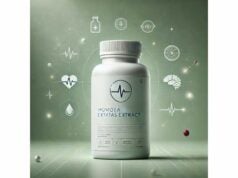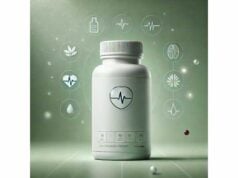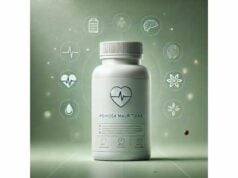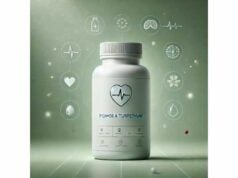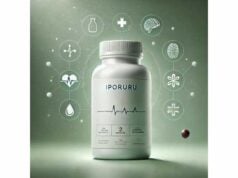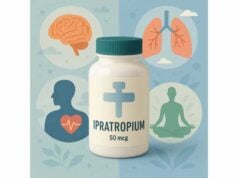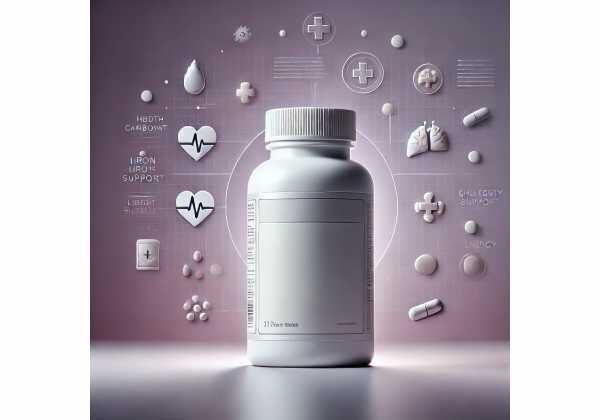
Iron carbonate—more precisely ferrous carbonate (FeCO₃)—is an oral iron salt used to rebuild low iron stores and correct iron-deficiency anemia when diet alone is not enough. As a source of elemental iron, it supplies the mineral your bone marrow needs to make hemoglobin, the oxygen-carrying protein in red blood cells. Ferrous carbonate contains a high proportion of elemental iron (about 48%), so tablets can deliver meaningful iron in a compact size. Like other oral irons, it is inexpensive, widely available in some markets, and effective when taken consistently. The keys to success are choosing the right elemental iron dose, using a dosing schedule that maximizes absorption while minimizing stomach upset, and watching for interactions that block uptake. This guide explains how ferrous carbonate works, who benefits most, how to dose it safely, how to take it for best results, and what side effects to expect—so you and your clinician can build a plan that works in real life.
Quick Overview
- Corrects iron deficiency by supplying elemental iron; typical hemoglobin rise begins within 2–4 weeks.
- Ferrous carbonate provides ~48% elemental iron; a 100 mg tablet ≈ 48 mg elemental iron.
- Common treatment targets: 40–100 mg elemental iron per day or on alternate days for 8–12 weeks.
- Avoid use without medical guidance in iron overload, active infection, or unexplained high ferritin or transferrin saturation.
Table of Contents
- What is iron carbonate and how it works
- Does it work and who benefits most
- How much iron carbonate per day
- How to take it for best absorption
- Side effects, interactions, and who should avoid
- Evidence and practical guidance
What is iron carbonate and how it works
Ferrous carbonate in plain language. Iron carbonate (ferrous carbonate, FeCO₃) is an inorganic salt that delivers elemental iron when it dissolves in stomach acid. The active moiety is the iron itself; the carbonate partner simply stabilizes the compound until ingestion. Unlike “carbonyl iron” (which is pure elemental iron), ferrous carbonate is a salt: a crystal lattice of iron(II) and carbonate ions. When the tablet reaches the stomach, acid liberates ferrous (Fe²⁺) ions, which then pass through DMT1 transporters in the small intestine. From there, iron is packaged onto transferrin and carried to the bone marrow for hemoglobin production.
Elemental iron content. By weight, anhydrous ferrous carbonate contains roughly 48% elemental iron. That means a 100 mg ferrous carbonate tablet provides ≈48 mg elemental iron. Some formulations use basic ferrous carbonate or blends; always dose by elemental iron, not salt weight, because elemental iron is what the body uses.
Why elemental iron matters. Labels often list both the salt weight and elemental iron. Elemental iron is the practical number for dosing because it directly predicts the amount available to correct deficiency. Two products can have the same tablet size but different elemental iron content—choosing by elemental iron aligns your dose with clinical targets.
How repletion improves symptoms. Restoring iron raises hemoglobin and replenishes iron-dependent enzymes in muscle and brain. People often notice improved exercise tolerance, less breathlessness and dizziness, fewer headaches, warmer hands and feet, and, over weeks to months, improved hair shedding when iron deficiency was the driver.
Where ferrous carbonate fits among iron options.
- Sulfur-based salts (ferrous sulfate, ferrous fumarate) and ferrous gluconate are the most familiar. Ferrous carbonate offers a high elemental density similar to fumarate with different excipients that some people prefer.
- Chelates (e.g., bisglycinate) may feel gentler for some but can contain less elemental iron per tablet.
- Carbonyl iron provides pure iron particles released slowly by gastric acid; it may be easier on the stomach at comparable elemental doses.
- Choice usually comes down to tolerability, cost, elemental strength, and availability. Switching formulations is reasonable if side effects or poor response limit success.
Does it work and who benefits most
Effectiveness in iron-deficiency anemia. With the right dose and schedule, ferrous carbonate corrects iron deficiency in most people. Reticulocytes (young red cells) typically rise in 3–7 days, and hemoglobin begins to climb by 2–4 weeks. A common expectation is a 1–2 g/dL hemoglobin increase over the first month when bleeding is controlled, vitamin B12/folate are adequate, and dosing is consistent. Ferritin and transferrin saturation (TSAT) usually normalize later in the course as stores rebuild.
Who is likely to benefit.
- Heavy menstrual bleeding (HMB): Frequent or prolonged periods are a leading cause of low iron in menstruating people. Oral iron is often first-line, with the plan tailored to cycle timing and GI tolerance.
- Pregnancy and postpartum: Requirements soar in the second and third trimesters. When diet falls short, oral iron—sometimes in every-other-day schedules to improve comfort—helps build reserves before delivery and replenish stores afterward.
- Vegetarians and vegans: Non-heme iron absorbs less efficiently; strategic supplementation can bridge the gap, especially with high-phytate diets.
- Frequent blood donors and endurance athletes: Repeated losses or high demands can outpace intake; short-term courses restore performance and reduce fatigue.
- Post-bariatric surgery, celiac disease, or IBD in remission: If absorption remains adequate and inflammation is controlled, well-planned oral iron may still work. Otherwise, intravenous (IV) iron may be needed.
When tablets are not enough. People with active inflammatory bowel disease, severe malabsorption, profound intolerance to oral iron, or urgent timelines (e.g., imminent surgery, late pregnancy with significant anemia) may benefit more from IV iron. Oral iron requires consistent dosing for 8–12 weeks (sometimes longer) and patients must tolerate GI effects. Lack of a hemoglobin rise by 2–4 weeks should prompt a look at adherence, dose, bleeding, B12/folate status, or a switch to IV therapy.
Measuring success. Beyond how you feel, lab trends tell the story. For most adults, aim to normalize hemoglobin and push ferritin into a comfortable buffer (commonly ≥50–100 µg/L, individualized) so symptoms don’t rebound quickly if small ongoing losses continue.
How much iron carbonate per day
Dose by elemental iron. Clinical targets are expressed in mg of elemental iron, not salt weight. For ferrous carbonate (~48% elemental iron), conversions are straightforward:
- 100 mg ferrous carbonate ≈ 48 mg elemental iron
- 200 mg ferrous carbonate ≈ 96 mg elemental iron
Typical adult treatment ranges.
- Standard therapy: 40–100 mg elemental iron per day, taken once daily or every other day, for 8–12 weeks or until hemoglobin normalizes and ferritin reaches the agreed target.
- Gentle start or sensitive stomach: 28–45 mg elemental iron on alternate days can be as effective with fewer GI effects for some people.
- Maintenance / prevention: If you’re at risk but not anemic, 18–27 mg elemental iron daily (or several times per week) may maintain stores, especially when diet is inconsistent.
Pregnancy (individualize with your clinician).
- Second/third trimester: Many programs use 30–60 mg elemental iron daily to meet increased needs, adjusting upward if anemia is present. If hemoglobin fails to rise or late in pregnancy, intravenous options may be considered.
Adolescents.
- Dosing is weight-based and depends on severity; a common approach is 2–3 mg/kg/day elemental iron (often capped by tolerability), reassessed as labs improve.
How long to continue. After hemoglobin normalizes, continue oral iron for ~3 months to rebuild stores unless side effects or labs argue otherwise. Stopping as soon as hemoglobin is “normal” often leads to relapse because ferritin lags behind.
When to step up care.
- No hemoglobin rise after 2–4 weeks of confirmed adherence at an appropriate dose.
- Intolerable side effects despite schedule adjustments and food timing strategies.
- Absorption barriers (post-bariatric malabsorption, active IBD, celiac with ongoing villous atrophy) that make oral therapy impractical.
- Significant ongoing blood loss that outpaces oral replacement.
Sample dosing table (ferrous carbonate, ≈48% elemental iron):
- 100 mg tablet → ≈48 mg elemental iron (1 tablet once daily or every other day).
- 200 mg tablet → ≈96 mg elemental iron (often split if sensitive).
Always pair dosing with monitoring: hemoglobin in 2–4 weeks; ferritin/TSAT in 4–8 weeks; sooner if pregnancy or perioperative timelines are tight.
How to take it for best absorption
Timing and frequency.
- Morning, empty stomach often yields better absorption because hepcidin (the hormone that blocks gut iron uptake) is typically lower earlier in the day. If nausea occurs, a small snack is reasonable—absorption may drop a bit, but consistency matters more than perfection.
- Alternate-day dosing (e.g., Monday/Wednesday/Friday) can improve comfort and may enhance fractional absorption in some people while keeping overall weekly elemental iron adequate.
Pairings that help.
- Vitamin C–rich foods (citrus, berries, bell peppers, broccoli) or ~50–200 mg vitamin C can keep iron in the absorbable ferrous state.
- Heme iron foods (meat, fish, poultry) eaten with non-heme iron tend to boost overall uptake in mixed meals.
Things that block iron. Take ferrous carbonate separately from:
- Coffee or tea (polyphenols) by ≥1–2 hours.
- Calcium-rich foods/supplements and antacids/PPIs by several hours when possible.
- High-phytate bran cereals, large soy servings, or very high-fiber meals close to the dose.
Build a routine you can live with.
- Pick a dosing schedule you can follow (daily or alternate days).
- Set a reminder tied to an existing habit (first thing in the morning, or mid-morning away from coffee).
- Track symptoms and side effects (nausea, constipation, dark stools) to discuss adjustments at follow-up.
- Recheck labs on schedule; if hemoglobin is rising and you feel better, you’re on the right track.
Travel and adherence tips. Keep a small pill case with labeled elemental iron amounts; bring snack options that don’t interfere (e.g., fruit) and avoid pairing doses with coffee stops.
If you miss a dose. Take it when you remember unless it’s almost time for the next one. Avoid doubling up; the gut can only absorb so much at once, and extra iron increases GI side effects without extra benefit.
Side effects, interactions, and who should avoid
Common side effects (usually dose or timing related):
- Nausea or stomach upset—often eased by switching to alternate-day dosing, lowering the elemental iron amount, or taking with a small snack.
- Constipation or hard stools—increase fluids and fiber; a gentle stool softener may help.
- Dark stools—expected and not harmful.
- Metallic taste—typically fades with continued use.
Less common issues:
- Diarrhea or abdominal cramping—consider splitting the dose or trying a different formulation.
- Tooth staining with liquids—use a straw and rinse afterward (tablets avoid this).
Drug and nutrient interactions:
- Calcium, magnesium, zinc, and antacids compete with iron; separate dosing by a few hours.
- Levothyroxine, tetracyclines, fluoroquinolones, and some bisphosphonates bind iron in the gut—separate by the interval your clinician recommends (commonly 2–6 hours, depending on the drug).
- Proton-pump inhibitors (PPIs) raise gastric pH and reduce iron solubility; consider timing around the PPI dose or alternative strategies if absorption is poor.
Who should not take ferrous carbonate without specialist guidance:
- Iron overload conditions (e.g., hereditary hemochromatosis), repeated transfusions, or unexplained high ferritin/TSAT—supplementing can be dangerous.
- Active systemic infection—iron can fuel pathogens; treat infection first unless benefits clearly outweigh risks.
- Severe inflammatory states—hepcidin can trap iron; address the cause or consider IV iron if appropriate.
- Children—iron is a leading cause of fatal pediatric poisoning when overdosed. Store out of reach; use weight-based dosing only under medical supervision.
Allergy and intolerance. True allergic reactions to iron salts are uncommon but possible (usually to excipients). If you develop hives, swelling, wheezing, or severe dizziness, stop and seek immediate care. Most tolerability problems are GI-related and dose-dependent; a different formulation or schedule often solves them.
Overdose warning. Acute iron overdose is a medical emergency. Symptoms include severe abdominal pain, vomiting, diarrhea, confusion, and shock. Seek urgent care immediately if overdose is suspected.
Evidence and practical guidance
Dose matters—and so does schedule. Modern evidence supports moderate elemental iron doses (often 40–100 mg) rather than very high daily totals, balancing absorption with comfort. Alternate-day regimens can maintain efficacy for many while reducing GI side effects. The marker of success is a steady hemoglobin rise across 2–4 weeks and ferritin recovery over 4–8 weeks.
Why some people do better on different forms. All oral iron salts depend on stomach acid to solubilize and reduce iron. People on acid-suppressing therapy or with gastric bypass may absorb poorly; in those cases, either adjust timing, increase the observation window for response, or consider IV iron when tablets repeatedly fail. Among salts, elemental iron density and excipients influence comfort; switching to ferrous carbonate (or from it) is reasonable if the first choice causes problems.
Laboratory checkpoints to guide therapy.
- Ferritin reflects iron stores but goes up in inflammation; pair it with TSAT and, when needed, CRP.
- Hemoglobin confirms anemia and tracks recovery; expect ~1–2 g/dL improvement in a month if bleeding is controlled and dosing is consistent.
- Targets should fit your situation (e.g., pregnancy, athletics, preoperative optimization). Many clinicians aim for ferritin ≥50–100 µg/L after anemia correction to build a buffer.
When to escalate to IV iron.
- Persistent intolerance despite schedule and formulation changes.
- No hemoglobin response in 2–4 weeks of confirmed dosing.
- Urgency (late pregnancy, impending surgery) or malabsorption (post-bariatric, active IBD).
IV iron restores iron quickly without the gut bottleneck, but it requires monitored infusions and medical oversight.
Lifestyle and diet still count. Combine supplementation with iron-rich meals (heme iron from meat, seafood, poultry; non-heme iron from beans, lentils, fortified grains, leafy greens) and vitamin C–rich foods to sustain gains. Reduce inhibitors near dosing times (coffee, tea, calcium concentrates).
Bottom line. Ferrous carbonate is a practical, high-elemental-density option for rebuilding iron. Dose by elemental iron, time it to maximize absorption, and track labs to confirm progress. If oral therapy doesn’t deliver the expected rise on schedule—or if side effects get in the way—work with your clinician on alternatives, including IV iron.
References
- Iron – Health Professional Fact Sheet 2023
- Oral iron supplementation: new formulations, old questions 2024 (Review)
- Iron Deficiency – Diagnosis and Management 2023 (Guideline)
- Table, Concentrations of elemental iron in typical iron tablets 2021
- Ferrous Carbonate | CFeO3 | CID 11248 2025
Disclaimer
This article provides general information and is not a substitute for professional medical advice, diagnosis, or treatment. Always discuss supplement use, dosing, and lab results with your healthcare professional—especially if you are pregnant, have chronic illness, take prescription medications, or have a history of iron overload. If you experience severe abdominal pain, persistent vomiting, black or bloody stools, chest pain, shortness of breath, swelling, hives, or dizziness after taking iron, seek medical care promptly. To support our work, you are welcome to share this article on Facebook, X (formerly Twitter), or any platform you prefer, and follow us for future evidence-based guides.

